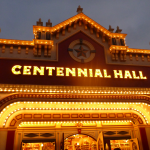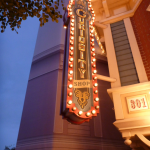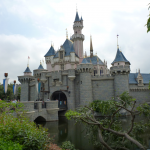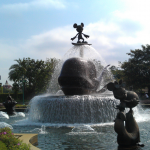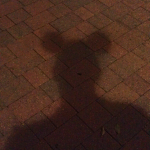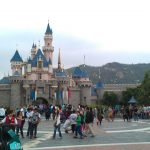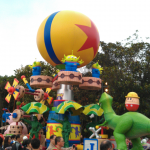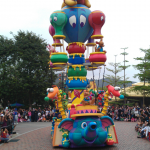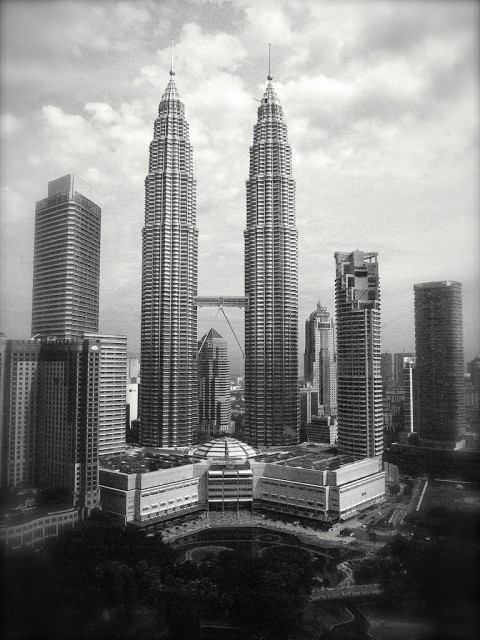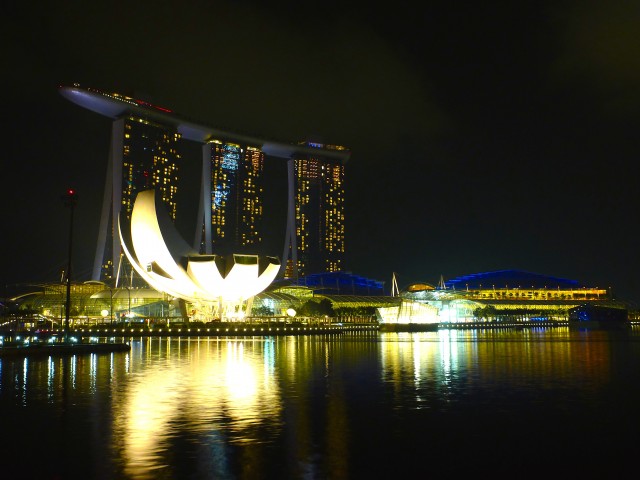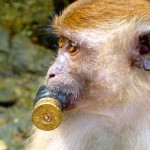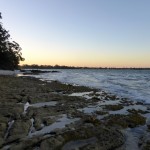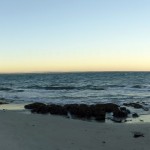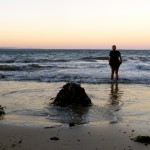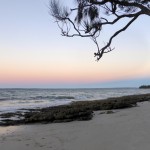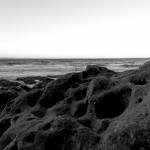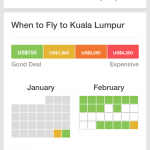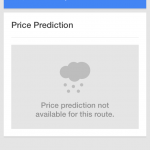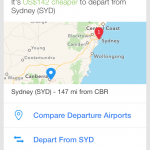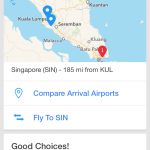Category: Travel
Other Activities for my Malaysia Trip?
In the middle of March (just over 3 weeks from now) I head off to Malaysia to watch the 2015 Petronas Malaysian Formula1 Grand Prix. But with a couple of days in the itinerary spare I figure I’ll do some other stuff. We all know that I’m heading to Penang and Johor Bahru during the trip, so naturally Legoland is on the cards but what else could I be doing?
Target Activities in and around Malaysia
- Petronas Towers – I’ve been to Kuala Lumpur something like 4 times and never been up the Petronas Towers, unfortunately the Online Booking System is offline due to the impending implementation of GST in Malaysia.
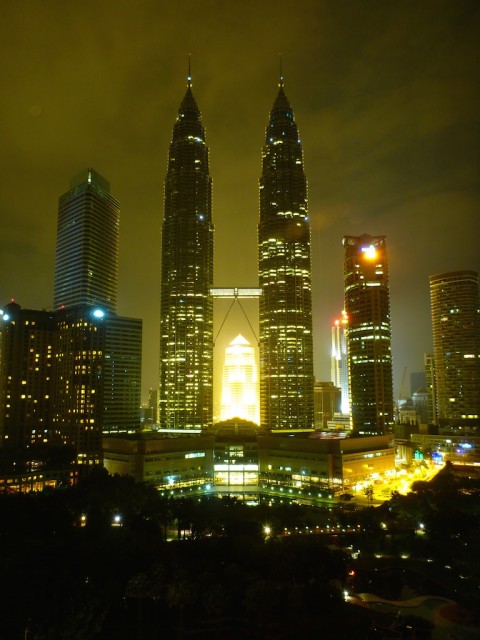
Petronas Towers I can’t wait to have some pics from the Skybridge!
- Singapore – When in Johor Bahru it would be silly to not “hop” the border and count around Singapore. It’s also essential to one of my other plans!

Singapore by Night - PANDAS – By now you’ll have read the Panda Story and by travelling to Singapore Zoo River Safari and Malaysias Zoo Negara I have the opportunity to take my Panda Tally to from 4 (Hong Kong 2012) to a massive 8! That means 8/49 Pandas out of China spotted!
- Monkey Beach – It’s in Penang and not far from Georgetown where I’ll be staying. It’s got lots of these guys, and I’m not the greatest fan of them, but it’s also an opportunity to tick off a “No Reservations” location.
Monkey – Batu Caves Malaysia 2012 Monkey – Batu Caves Malaysia 2012 “Biting the Bullet” – Monkey Style - Royal Malaysian Airforce Museum – This is apparently by many reviews to be considered a fairly rough and ready affair but I’m still keen to take a look.
- Mall Crawling – Visit the 4th, 8th, 11th, 19th, 40th and 56th largest Malls in the world (Australias biggest ranks at around 70th) – Yes I’ve already been to the 8th and 19th largest before)
The Contradictions of TripAdvisor Forums
TripAdvisor Forums have their place in a travellers armoury, there’s a huge mix of participants from naive first time travellers to seasoned professionals. However like every other forum sometimes you need to take the “advice” with a grain of salt.
TripAdvisor is really all about making money
Are you a Sales Lead or a Member?
 TripAdvisor is really all about making money, you as a reader are nothing but a potential sales lead for the services advertised throughout the site. Every time you search for hotel rooms and flights through the site the cookies being baked into your computer are adding to the sites income.
TripAdvisor is really all about making money, you as a reader are nothing but a potential sales lead for the services advertised throughout the site. Every time you search for hotel rooms and flights through the site the cookies being baked into your computer are adding to the sites income.
The staff of TripAdvisor are there to keep that well oiled cash machine running and not to ensure the participants in the Forums provide consistent accurate advice.
So with that in mind lets move onto the next contradiction.
Destination Experts
Every Forum has Moderators, people who can keep the peace and offer sage advice when needed. In he case of TripAdvisor the two roles are separated, a Destination Expert typically has a high post-count and a high rate of “presence” on the Forums. The moderation seems to be done by deleting posts after they’re reported and very little (if any) feedback is given to the poster.
In my dealings with these Destination Experts I’ve found a mix of genuinely nice people who have the time and energy to help out, and also those who always seem to grind out the say cut-n-paste solutions that perpetuate myths.
Owee over at Owee58.com wrote a great piece about his attempt to become a recognised Destination Expert.
The term Destination Expert is misleading and in most cases an out right lie. A Tripadvisor chosen volunteer is a more accurate term. Please keep this in mind when using their resource.
Owee’s experience highlights the distinctly profit driven motives, and the level of restriction TripAdvisor imposes upon those experts (which also discourages many reputable writers from participating under their “real” names)
What about Good Advice?
I spend a portion of my time on TripAdvisor kicking through the Bargain Travel forum and was surprised when someone posted a link to the great NomadicMatt “12 Things Not to Do When You Travel” article.
The link got posted in a few threads and a number of Destination Experts chimed in saying it was the best advice ever. Terrific, because the 12 tips are genuinely useful for all travellers.
The ones closest to my heart revolve around money, The “Don’t Exchange money at the airport” and “Use a fee free card”. The advice is rock solid and backed up by posts throughout the forums. Over in the Destination Forum for Malaysia we have a Destination Expert giving a good balanced view of costs while a few people are advocating everything from changing money back “at home” – to carrying large amounts of cash which then contradicts the “beware of bag snatchers” mantra!
Not once did an expert or TripAdvisor themselves suggest checking out the article, nor could many others post the link for fear or falling foul of the “posting links to blogs” rule. That rule would make linking to NomadicMatt.com a breach as it’s a very commercial Blog no matter how much we value the content!
I’m not even going to talk about the Monkey post! Well, ok, I will. There was a post about Batu Caves, the writer had asked if the caves were worth it given they had a dislike of monkeys. Fair question, I’m not a fan of them myself, and while some people tried to balance up the “value” of the attraction versus the population of monkeys others started talking about all the rabies travellers would get while being bitten.
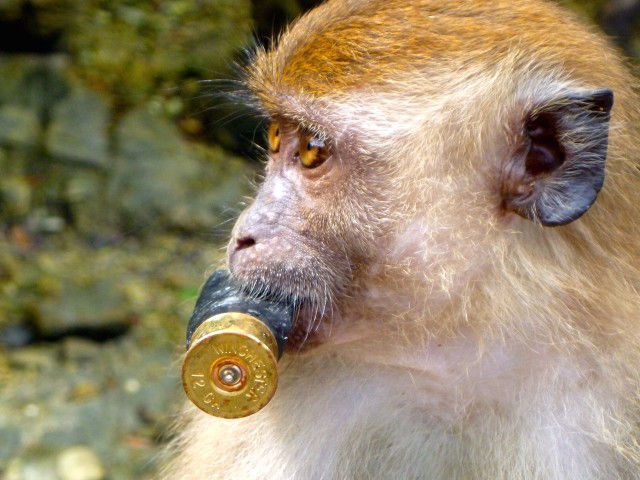
Yes, monkeys can bite. No, monkeys don’t bite randomly
Once again there’s no consistency, and once again not even Destination Experts could agree!
Where does that leave us?
When you use TripAdvisor do so with an open mind. Don’t let some views dissuade you from accessing what is still a marvellous resource, but always be aware of the pitfalls.
Opinionated Destination Experts, False Reviews and people willing to “work the system” to make a buck combined with he profit motive of the TripAdvisor company mean that like Professional Travel Bloggers you need to keep your wits about you.
“The Amazing Race” way to Travel
Lessons from “The Amazing Race”
In case you’ve been hiding under a rock for the past 15 years you’ll be familiar with “The Amazing Race”, for those that are not CBS provides a nice potted summary:
THE AMAZING RACE is a multi-Emmy Award-winning reality series hosted by Emmy Award- nominated host Phil Keoghan, which pits 11 teams, each comprised of two members, against each other on a trek around the world for approximately 25 days. At every destination, each team must compete in a series of challenges, some mental and some physical, and only when the tasks are completed will they learn of their next location. Teams who are the farthest behind will gradually be eliminated as the contest progresses, with the first team to arrive at the final destination winning $1 million.
You can learn more about the details of this challenging “game” by hundreds of hours trawling fan-sites, or just pop over to Wikipedia.
With that out of the way lets talk about four things travellers can take away from The Amazing Race.
Travel as we all know isn’t always easy, it can be long days of disappointing destinations and infuriating experiences dealing with people. The rewards, or the good days more than make up for these, and there’s always “next time” when the same things won’t happen again right?
Lesson 1: Route Info
 The old saying of “Failing to Plan is Planning to Fail” could apply here, it’s all about the research you do and how you prepare. On “The Amazing Race” teams are provided the basic outline of their leg. They’re told of key route and transit factors, provided a budget and from there it’s up them.
The old saying of “Failing to Plan is Planning to Fail” could apply here, it’s all about the research you do and how you prepare. On “The Amazing Race” teams are provided the basic outline of their leg. They’re told of key route and transit factors, provided a budget and from there it’s up them.
Sometimes it’s not the fastest route (13 hour ferry ride vs a 2 hour flight) nor the most direct route that can give you the best experience. Using resources like TripAdvisor or Travel Blogs can open you eyes to many of the different ways to move around or to your destination. Some may not seem glamorous or exciting when you’re sitting at the keyboard, but do try and remember that “half the fun is getting there”.
So when planning your travel don’t just think about the destination, consider the steps along the way. Can you “tick off” another form of travel, perhaps doing that overnight “sleeper” train journey will spare you the expense of a hotel room and let you arrive refreshed in another city or country. You could have tales of raging North Sea storms to share, stories that will set your holiday apart from everyone else who just flew.
Lesson 2: The Detour
 “A Detour is a choice between two tasks”, sure for television these tasks can be arduous parodies of life or culture in of the current location, but for travellers the lesson is about making choices to suit you.
“A Detour is a choice between two tasks”, sure for television these tasks can be arduous parodies of life or culture in of the current location, but for travellers the lesson is about making choices to suit you.
Have you ever read the destination guide for a place and thought how boring it sounds? The lesson here is to seek out activities that you will remember for years to come. Don’t be afraid to step out from your comfort zone, pull on the silly Panda hat and have a go. Do you consider yourself too old for some attractions? Wrong, you’re never too old for a theme park or zoo. Too shy for the beach? Why not get yourself dropped off Survivor style?
It’s these detours – or choices – that can make a good holiday great, some will cost money and others will take time, but unless you get out of the hotel and get amongst it you’ll never know. Eat in a local market, dance along with a street musician or take a look at that ancient monument. In short don’t limit yourself!
Lesson 3: Fast Forward
 Plans can change, and sometimes getting the heck out of dodge is a good idea. Sometimes forgoing one aspect or leg of your journey can open up more opportunities. Say you’re sitting in you’re sitting in your hotel, the weathers been bad and you’ve trekked as much of the city as you can. Why not take a “Fast Forward” somewhere else? Check with the local Low-Cost-Carriers, maybe there’s an overnight side-trip you could take?
Plans can change, and sometimes getting the heck out of dodge is a good idea. Sometimes forgoing one aspect or leg of your journey can open up more opportunities. Say you’re sitting in you’re sitting in your hotel, the weathers been bad and you’ve trekked as much of the city as you can. Why not take a “Fast Forward” somewhere else? Check with the local Low-Cost-Carriers, maybe there’s an overnight side-trip you could take?
Just like on the show taking a Fast Forward also adds elements of risk and unknown, you are forced to make plans without having detailed planning, think on your feet and if you don’t pull it off you could find yourself having wasted time and money.
So for your successful Fast Forward be honest with yourself, are you prepared to just pack up and move on without the meticulous research that you’ve been relying on? Do you have the budget available for incidentals that you will incur?
If the answers yes to the above then why not give it a go?
Lesson 4: The Roadblock
 Travelling as a couple, or in a group, is great because you get to share experiences, split some of the costs and you’ve always got a (hopefully) friendly face around when things go wrong. Maybe you’ll also moderate your experience to “fit in” with others.
Travelling as a couple, or in a group, is great because you get to share experiences, split some of the costs and you’ve always got a (hopefully) friendly face around when things go wrong. Maybe you’ll also moderate your experience to “fit in” with others.
Roadblocks are solo tasks, and for the traveller really it means taking the time to do your own thing. There’s nothing worse than being at the foot of a 1000 step climb into a cave system and hearing one of your travelling companions say “Lets go, it’s too far/hard”. You know what? Just do it without them! That’s right just because you’re in a group it doesn’t mean you’re bound to them.
From dining choices to attractions and travel types who we travel with can affect our experiences and it’s important to stop and ask yourself who’s trip you’re really on.
Tired of comforting to others? Take an entire trip yourself, without your partner or friends you can rediscover your inner strengths, develop your self reliance and even bring out the confidence you never knew you had.
One last thing;
The next time you’re watching “The Amazing Race” think about how you behave when you travel. How do you react when things go wrong, when the taxi driver gets lost and you end up at the wrong monument or the only food around is friend bugs?
Stress during travel can bring out the very worst in people, so think about how you deal with it, try pulling on the smile and thinking “well now I’ve seen Loch Ness AND the local duck pond!”
Don’t be “that team”…
Travel Blogging: Skeptics Unite
Ive already expressed my skepticism of the “Blogger Dream” – and gone a little ways to describing some of the pitfalls and pittances it can earn. However I still enjoy reading about the dream and occasionally have fantasies about getting rich quick.
Travel Blogging is hard?
I suppose it is, in fact like most creative pursuits it takes time and effort to plan, write and post content that will attract and maintain an audience that’s also willing to follow up with Facebook Likes or Retweets. Although the best perspective I’ve seen thrown on it comes from Theodora at escapeartistes.com
It’s not subsistence farming in a drought. It’s not child protection or first response. It’s not labouring in the sewers, in a sweatshop, or on zero-hours contracts at the minimum wage. Nor is it rocket science, the SAS or brain surgery.
She then goes on to point out the low barrier to entry, hey I meet all of that, well except maybe the high-spec photographic equipment and I’m only partially convinced of my own delusions of grandeur.
Really there’s more, lots more, but you should really pop over to her nicely detailed post on “Why I’ll Never be a Professional Travel Blogger” and then think about what you’re reading when Zite, News360 or Flipboard throws you yet another tantalising story of how some witty hipster has travelled the world for free.
Yes my friends, they may not have spent much money to get around the world but their credibility is traded the moment they don’t declare the true financial link to what they’re reviewing.
My Panda Story
Pandas I have seen previously: 2 (Ying Ying & Le Le)
Pandas I will see next: 6 (Xing Xing, Liang Liang, Kai Kai, Jia Jia, Wang Wang & Funi)That will take my tally to 8/49 of the Pandas living outside of China – and perhaps 0.4% of all Pandas in existence (based on middle estimates of Panda population).
Giant Panda & Why I like them…
“Pandas, mate why are you so fascinated by Pandas?” I get asked this all the time (well ok I’ve been asked once), and I thought I’d explain.
I was born in 1975, by the time the early 1980’s rolled around I was old enough to watch and understand the documentaries on the fate of Pandas in the wild. At the time Pandas in captivity wasn’t really a “done thing” and in the wild they were “rare”. The WWF (Not the Wrestling mob) had kicked conservation efforts in gear and raised the profile of the Panda and so this young impressionable kid in Sawtell/Toormina thought he’d never see a live Panda, ever.
For me the ability to see a real live Panda (even if in captivity) represents in one tiny way just how life can change, and just how things we thought we’d never do/see can still happen.
The Pandas for me also serve as a reminder to take the opportunity to do things when the opportunity arises, to do while I can, not complain when I can no longer.
So yes that’s the Panda story.
Giant Panda I have seen:
2012 – Ocean Park Hong Kong. I’m fairly sure I trekked the whole park but I only recall seeing two Panda despite there being supposedly 4 in the Park. I will have to check the pictures more carefully to ensure I’m not missing any!
Daytrip: Orion Beach
Daytrip: Canberra – Orion Beach
In Canberra taking a daytrip to the “coast” usually means loading up the car and taking a 90-120 minute drive to Batemans Bay. We went a little further afield doubling the distance and duration to sit upon the shores of Jervis Bay on the picturesque Orion Beach.
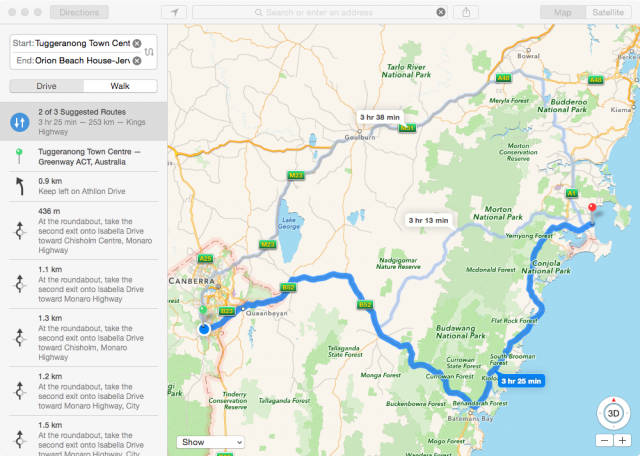
The TomTom mapping on the built in Satnav was oddly convinced to take the middle of three routes, while we were going to follow the highlighted (and more familiar) route following the well trodden Kings Highway to Batemans Bay and then turning left and following the Princes Highway for the remaining distance.

As you’d expect the journey along the coast passes through many towns as it winds from hinterland to the shoreline on a slow progression north. We took a quick comfort stop in Ulladulla, where the highway virtually touches the sea. While the photo shows a magnificent hue it can’t portray the howling blasts of wind coming off the water.
Ulladulla also marks the beginning of the end of the journey with only about 30 minutes of travel left to the clusters of towns around Jervis Bay.
Orion Beach
Looking at the pictures above you’d be right in thinking “it looks suspiciously late in the day” and you’d be right as Orion Beach wasn’t our only reason to trek all the way to Jervis Bay – but it was the ultimate goal of the trip to plant our feet in the ocean after many months of land-locked living in Canberra.
The beach itself is a narrow strip of sand and rock features along the shores of Jervis Bay. With and incoming tide and a strong wind the waters were murky, washing away the traces of the days activities.
So how did the GT220 go?
I’ve written other posts here about the long-legged touring ability of the Renault Megane GT220 and once again it failed to disappoint with a good compromise between stability over many varied road surfaces and comfort. The F4RT provides a seriously “adequate” overtaking power while offering reasonably good economy. Given the rather steep terrain and high average speeds over it running around the 8L/100km is not bad.
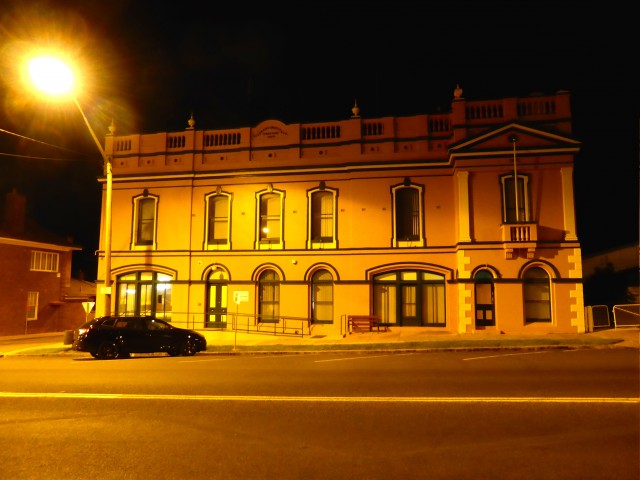
On the return journey the magically bright Bi-Xenon headlights turned the night into daylight letting us pick-out the roadside dangers of wildlife before they crossed our paths. The brakes pulling us up with metres of space when the inevitable rabbit hopped across the road in our path.
In one way this daytrip is the warmup and practice for a longer roadtrip planned for later this year where we’re looking at travelling around 3500km as we complete the South Eastern triangle between Canberra, Adelaide and Melbourne.
Bargain Travel: Budgeting vs Bargains
Reproduced (and tidied) from my TripAdvisor Post. In this post I take a quick look at how to snare bargain to let you travel within a budget.
Budget vs Bargain
I budget my travel, that is, I define how much things are expected to cost, then compare that to what the actual costs are. No different to household budgeting or basic accounting. It all starts with research.
Research helps you identify “bargains” and in turn knowing what’s a bargain and what’s the normal prices will help you build a “Budget”!
Say I get promo e-mails from 2-3 flight cost trackers/aggregators and they repeated (week on week etc) tell me that tickets to Asia are available from $500. I know it costs me around $250 more to get to one of the airports these tickets would depart from. So the total of $750 becomes my initial “budget” for flights.
I may do some research on Trivago or HotelsCombined to find what accommodation prices are like in my destination country. Generally I would say that I nominate a budget for this based on guesses and experience. So for Malaysia I know (with appropriate advance booking) I can stay in a comfortable room with ensuite for $50-$100/night right in the heart of KL. If I’m challenging myself I’ll set the budget low, it makes me work harder to find the deal.
Finally I get a quote on proper travel insurance so I know most of my pre-departure costs.
This goes into a spreadsheet (Google Docs is handy for this) and I’ll enter in the actual costs as I book things. If new costs comes up (like side-trips) I add them in.
| F1 Trip 2015 | ||
| Description | Estimate | Actual |
| Flights (CBR-KUL) Return | $ 750.00 | $626.11 |
| Flights (KUL-JHB) Return | $100.00 | $56.00 |
| Flights (KUL-PNG) Return | $100.00 | $44.00 |
| F1 Ticket | $250.00 | $99.00 |
| Accommodation (**-** Mar) KL | $ 200.00 | $123.98 |
| Accommodation (**-** Mar) JB | $200.00 | $153.73 |
| Accommodation (**-** Mar) KL | $200.00 | $275.20 |
| Accommodation (**-** Apr) PN | $200.00 | $72.36 |
| Travel Insurance | $100.00 | TBA |
| Totals | $2100 | $1450.38 |
As you can see it’s primitive. But it lets me add up things along the way. That’s how I know I’ve got my 14 days away covered for AUD1500.
—-
When arriving at the destination there’s other things to pay for too. A transit card (if available), a local SIM card, any destination specific packages. For example I may buy a transit package to/from an event I’m attending. For stuff like the F1 (which I’m attending) there’s usually a deal available locally that is much cheaper than sourcing in advance.
Most of these things can be researched pretty well too. You can find information on Local SIMs through the destination forums on TripAdvisor, or Google.
Don’t expect people on the forums to tell you everything, just ask about providers and experiences with providers. Then check out their website, can you recharge online using an international credit card? What data packs are available? etc etc. Know roughly what to ask for when you arrive at the Kiosk at the airport to buy the thing. Know roughly what it should cost.
So further down my spreadsheet I have a section for these costs.
Then there food and living expenses – I don’t budget these but there’s no reason you can’t. I expect to have around $100/day in costs – some days more some days less, it’s a holiday after all 🙂
Bargain Travel: The “Hopper” App
“Hopper” – A Quick Review
Over the past few days a few of the news aggregator apps I use have been bombarding me with short blogs about how awesome “Hopper” is. I thought I’d download it and have a look at how well it performs against my own “database” of flight price trends to destinations I’m interested in.
What is “Hopper”?
If you haven’t read about it here’s a potted summary.
“Hopper” uses a background database of flight prices to offer you a four-colour scale of flight prices to your choice of destination. It will help you identify “cheap” days to fly and give you a comparison of other days where flights may be lower. It ultimately will let you select flights and then divert you to a booking site so you can buy those tickets. It’s a free app, and that’s how Hopper makes money, referral to flight bookings, so while Hopper may be neutral they’ll only be showing flights being sold by their Affiliate program.
Does it work?
I’m not convinced that the database they have is incredibly well populated outside of the major US routes. For Asian trips it was able to find and link-up flights OK but the “intelligence” on best days to buy and long-term seasonal trends they promote just wasn’t there. I think once more people start using the App it will drive up the quality of the statistical information. In short it works, but it doesn’t work better than having a few basic searches and notifications set up in “Skyscanner” or or any other App/Website as you still need to have an idea on where and when you want to travel. What “Hopper” told me in 5 minutes I could match on Skyscanners website in 5 minutes.
What does this mean for a Bargain Traveller?
The App could help you quickly narrow into a bargain ticket for a “new” destination that you’re not familiar with researching. It also could easily exclude the “best” combination of flights and deals by having a preference for point to point flights booked on a single ticket, not multi-ticket, multi-hop options that to me really match the name “Hopper”. At the end of the day the App is a vehicle to bind into the Travelocity/Expedia and probably other Flight Sales Affiliate programs so your pricing and route options will be based on those players and how they’re willing to book tickets.
The App is also USD based and as such EVERY booking defaults to USD. This makes comparison easy, but you have to remember currency conversion takes place at every level. Once you leave the App to book a flight the providers website or App can change the currency to match your local currency, and in at least one of the samples it also hiked up the offered ticket price considerably more than the USD:AUD conversion.
In Summary?
If you need to take trips at very short notice and don’t get enough time to adequately research flight pricing cycles then this App _may_ help you find cheaper days to fly. It’s still biased by the need the need of the App developers to generate flow-through sales through their Affiliate providers and may not give 100% coverage of route/flight options.
It’s no substitute for doing your own detailed research over a few weeks using other resources and breaking down your route options to explore multi-ticket or multi-hop scenarios.
In almost every case I was able to utilise other search tools to get a better deal for the flights suggested (once currency conversion took place). This is because the Affiliate program the “Hopper” guys use is not consistently the “cheapest” of the many hundreds of options. (I used the DoHop aggregator as my base reference for this test http://my.reservationdestination.com/flights/ – noting that it’s not always the cheapest either).
As I’ve said there’s no substitute for research of your own, and “Hopper” can form part of it.
Bargain Travel: Cash is King
Reproduced (and tidied) from my TripAdvisor Post. Here I talk about the merits of using local cash-less solutions for public transport.
Cash is King!
Except when it’s not. As I’ve outlined previously I don’t like carrying heaps of cash, I hate coins even more. So those machines that convert coins and notes into train or bus tickets, well I really really dislike those.
Public transport is a conundrum of you can save heaps by using the local rail and bus services, compared to taxis or Uber. If, like me, you’re always converting notes into coins which then stay in a pile in the hotel until it gets way to out-of-control and then I’m forced into counting out tiny coins at the Starbucks when I’ve not had enough caffeine to count effectively and well it just gets out-of-hand. I once left all my loose change in a hotel room upon checking out just because it was too much effort to deal with. I was even more surprised when I got a call from the hotel telling me I’d left a considerable amount of cash in the room. The coins had exceeded a decent two handful and counted out exceeded one nights (cheap) accommodation. So yes I hate coins.
The best way to get around if only for the convenience factor of unfamiliar coins, getting off at the wrong stop or not knowing what the wrong stop is ends up being using some kind of Touch’n’Go wavy card type system. In Hong Kong its an Octopus Card, In Malaysia a MyPass card will work throughout Kuala Lumper, in Sweden there’s something else. My point is they exist and there’s always a tourist friendly version available.
The Malaysian “MyPass” comes with a few discount vouchers, and a SIM Card for a local telco. I whacked 100RM on mine when I got it at the airport and touch’n’go’d my way around for 10 days last trip, Monorail from the central railway station, train to another suburb, train to an attraction, no worries. No pesky coins, no “oops wrong token moments”. In Hong Kong I’ve used my Octopus card to buy coffee, train trips, hotdogs and well just about anything, I love Hong Kong if only because coins are optional!
I met up with fellow Aussies last trip, parents of a friend of mine actually, they’re cash travellers, they bring over Aussie $$, exchange for local $$ and don’t use cards. Yeah, in a simple day of sightseeing I spent about no time counting money, queuing for the ticket machine or wandering if I had enough cash to enjoy a beer with lunch. Yeah if you can swing it, get on the cash-free transit option.
Sometimes the bargain isn’t in the price it’s in the time saving, or not breaking notes before you want to buy something more than an 3RM bus-ride. We all know a broken note is as good as gone!
